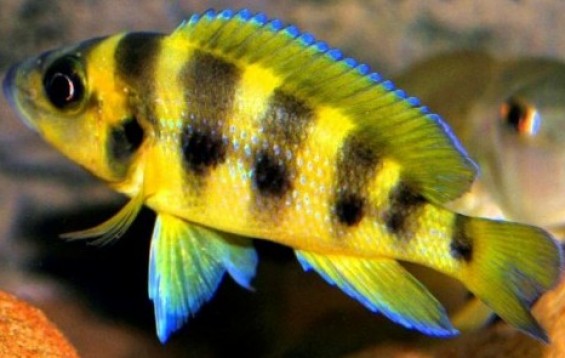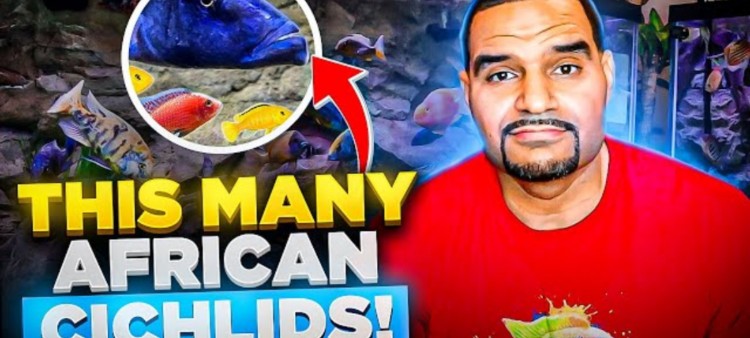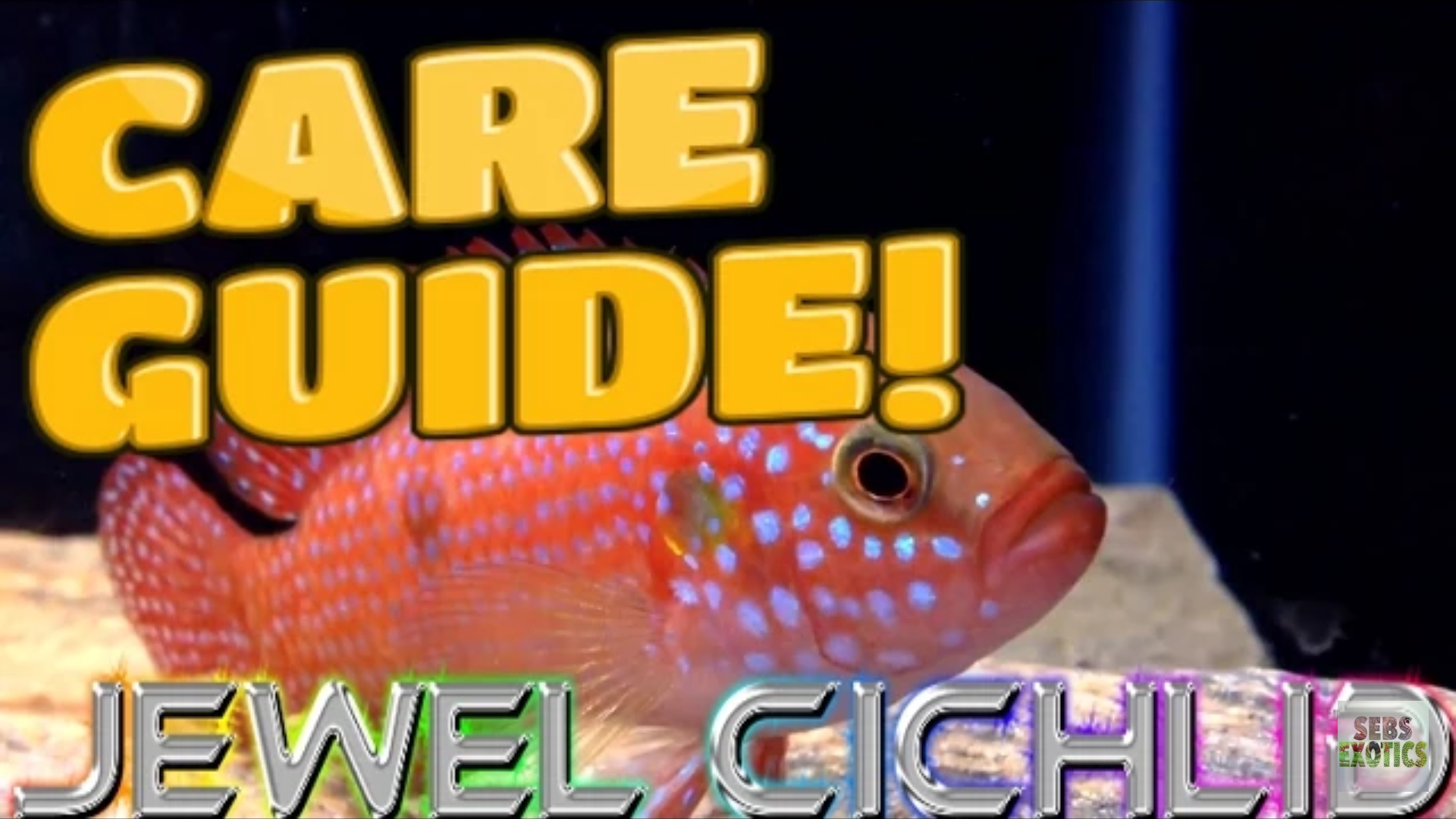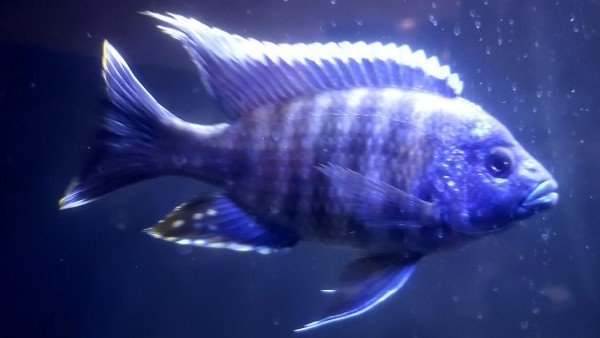- Name:
Gold Sexfasciatus Cichlid
(View AKA's) - Family: Cichlidae
- Species: African Cichlids
- Scientific Name: Neolamprologus sexfasciatus


General info about Gold Sexfasciatus Cichlid
Neonlamprologus sexfasciatus has an elongated gold, silver or white body with six dark vertical stripes and their fins have a blue lining, they can reach 6 inches. To keep these fish in captivity, water pH should be between 8.5 and 9.2, and the water temperature should range from 73.4ºF to 78.8ºF. The tank should have a sandy or small gravel substrate, caves, rocks and driftwood. This species is highly aggressive, and it is advisable to be kept in a species only tank, however, it can be kept in a Cichlid tank as long as the tankmates have the same size and attitude. These fish are extremely aggressive towards its kind and shouldn’t be kept in groups, however, keeping a pair can work.
Gold Sexfasciatus Cichlid Diet & Nutrition
This species is carnivorous. It can be fed with bloodworms, shrimp and carnivore dried foods.
Determining Sex of Gold Sexfasciatus Cichlid
Males are larger than females.
Breeding & Spawning Gold Sexfasciatus Cichlid
This species loses its stripes while spawning. It forms a monogamous pair which spawns in caves they excavated themselves. The female lays her eggs and the male fertilizes them. Free swimming fry can be fed with newly hatch brine shrimp. The male defends the area and the young and can even become aggressive towards the female.
Gold Sexfasciatus Cichlid Origin
This species can be found in the rocky waters of Lake Tanganyika, Africa.
Original Detail
| Name | Species | Family | Scientific Name | More Detail | Added by |
|---|---|---|---|---|---|
| Gold Sexfasciatus Cichlid | African Cichlids | Cichlidae | Neolamprologus sexfasciatus | Neonlamprologus sexfasciatus has an elongated gold, silver or white body with six dark vertical stripes and their fins have a blue lining, they can reach 6 inches. To keep these fish in captivity, water pH should be between 8.5 and 9.2, and the water temperature should range from 73.4ºF to 78.8ºF. The tank should have a sandy or small gravel substrate, caves, rocks and driftwood. This species is highly aggressive, and it is advisable to be kept in a species only tank, however, it can be kept in a Cichlid tank as long as the tankmates have the same size and attitude. These fish are extremely aggressive towards its kind and shouldn’t be kept in groups, however, keeping a pair can work. |
PalaciosAn |
Changed by users
| Submitted Date | Submitted By | Status | Action |
|---|






